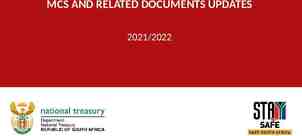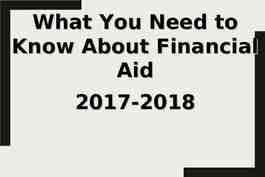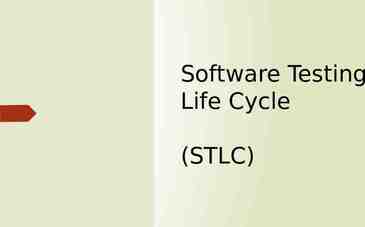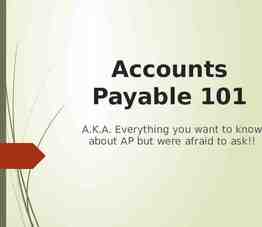Fresh Fruit and Vegetable Program AU G U S T 2 0 1 7
41 Slides4.73 MB
Fresh Fruit and Vegetable Program AU G U S T 2 0 1 7
What is FFVP? Program Goals: Healthier School Environments Increase variety Increase children consumption Impact present and future health
History Pilot project in 2002 Alaska began participating in 2008 Funding increased yearly 35 districts 220 schools
School Selection Criteria Be an elementary school Participate in NSLP Have a high percentage of low-income students Have the approval of the district superintendent, school principal, and the child nutrition program director
Program Benefits No meal count No required portion size All children served Teachers participate as positive role models
Best Practices Widely publicize the program and location Serve at least twice a week, if possible Provide nutrition education Establish an operational plan, “who does what and where” Follow proper procurement standards Follow all food safety/HACCAP procedures Serve free fresh fruit & vegetables during the school day outside of the school’s breakfast and lunch periods Submit monthly claims on time
Who Can Participate Any student enrolled in the school and present during the FFVP service including Prekindergarten students enrolled in school K-6 elementary school students K-8 students if school is in one building site Teachers responsible for serving Not available for general population
Best Practice Teachers can Model healthful eating habits by participating with their students Incorporate nutrition education lessons into the general curriculum Talk with students about nutrition, health, hygiene, and manners
What to Serve Fresh Fruit Fresh Vegetables Cooked Vegetables (once a week)
What Not to Serve Processed/preserved produce Snack type fruit products Dried Fruit Trail mix Fruit or vegetable pizzas Smoothies Popcorn
Serving Limits Dips for vegetables only low-fat dip “Cooked” vegetables- Fresh vegetables can be served cooked, once per week, if included in a nutrition education lesson
When Can FFVP Be Served During the school day Ensure the FFVP service is fully monitored Consider serving during the mid-morning or afternoon after lunch Service cannot be at the end of the day while students are being released to go home Not during breakfast or lunch meal times Not during summer school sessions
Where Can FFVP Be Served Classrooms Reduce messes Minimize interruptions to learning Incorporate easily into a learning lesson Hallways Kiosks Cafeteria (not during breakfast or lunch) Part of a nutrition education activity
How Much Can Be Served No required serving size Consider age group Smaller portions for tasting new varieties
Best Practices oEnsure fruits & vegetables are appealing and easy to grab o Serve low-fat or non-fat dips for vegetables in preportioned, 1-2 tablespoons servings o Introduce different varieties while encouraging their favorites o Serve FFVP where children can easily consume the fruits & vegetables o Remind children of good manners o Reinforce good eating habits
Accommodating Disabilities If a child’s disability prevents them from consuming fresh fruit & vegetables as prepared, the school must provide accommodations as they would for other school meals, when proper documentation is on file.
How Funding Works Receive between 50 ‐ 75 per student for the school year Example: A school has 100 enrolled students They are funded at 50 per student 100 x 50 5,000 (for the year) Do not underspend!
How Funding Works Due to the differences between the Federal Fiscal Year and the School Year, the FFVP allocations are distributed in two separate allocations. The first allocation or July allocation is available for obligations from July 1st through September 30th. Any unobligated FFVP funds after September 31st, will no longer be available. The second allocation will then be made on October 1st. Schools can obligate the October funds through June 30 th. 1st Quarter Allocation of funds which must be spent or encumbered from July 1 through September 30. 2nd Quarter Allocation of funds which must be spent or encumbered from October 1 through June 30. Any money spent that exceeds a district’s award cannot be reimbursed by the state and will have to be paid for by the district.
How Can You Spend Funding? Operating Costs: Fresh fruits and vegetables non-fat dip for vegetables only Nonfood items (napkins, paper plates, bowls, etc.) Pre-cut produce and ready-made produce trays Labor cost for staff who prepare and serve the FFVP snacks
How Can You Spend Funding? Operating Costs: Shipping cost Equipment valued less than 300 (example is the Sunkist Sectionizer) Equipment must be used for FFVP only If equipment is being used for other school feeding program, the purchase must be prorated among the programs
Administrative costs Purchasing or leasing of large equipment Salaries of employees who compile claims, prepare menus, and order produce and supplies
Administrative Costs Include equipment purchases over 300 All equipment purchases must be pre-approved Indirect labor costs Costs are limited to 10% of your school’s total FFVP grant
Student Eligibility FFVP follows these guidelines for service: Traditional elementary grades K-6, If the site includes pre-K, those students participate If a school serves K-8 at one building site , all students will participate If a school serves K-12 at one building site, only grades K-8 will be eligible to participate Co-located private preschools and/or Head Starts are not eligible for participation
Recordkeeping Requirements Records to maintain are: Copy of monthly claim End of year reports Contracts & addendums Contact information Invoices Purchase Orders Maintain records for the current year plus 3 years
Partnerships USDA encourages partnerships in to support the FFVP Examples of partnerships are: local grocers local farms public health tribal health Cooperative Extension
The Spending Plan Ensure program funding stretches the whole year Helps document carry-over between grant periods Carry over funds from the 1st quarter MUST be documented in your spending plan NOT and automatic rollover Due August 28th
FFVP Application in CNP Web
FFVP Information on NSLP Application Select Months of FFVP Operation on NSLP Site Information Sheet for each FFVP school
The Claim Process in CNP Web
FFVP Monthly Claims on CNPWeb
FFVP Monthly Reimbursement Form
Administrative Reviews
Off-Site Review Procedure State must validate one claim for reimbursement State may select any month in current school year If a school has not submitted a claim for the current school year, the state must select a claim from the previous school year.
Validation Compare the total cost claimed against supporting cost documentation. If totals are the same and, then the state validates the claim and the FFVP school is compliant If totals are not the same or contain unallowable costs, the state does not validate the claim and the FFVP school is non-compliant
Documentation The supporting cost documentation must support the FFVP school: Uses majority of funds to purchase fresh produce Carefully review and prorate equipment purchases Labor and non-food costs are minimal Payment system records show that no more than 10% of the total grant is administrative costs
On-Site Review Procedures State must observe FFVP operation in each selected school FFVP available to all enrolled and eligible students FFVP is free School offers FFVP during school day, but outside the meal service times of NSLP and SBP School widely publicizes FFVP School does not allow frozen, canned, dried, or other types of processed fruits The school does not allow the following products: fruit/vegetable juice, nuts, cottage cheese, trail mix, fruit or vegetable pizza, smoothies, fruit strips, fruit drops or fruit leather
Continuing On-Site Review Procedure School provides dip for vegetables only low-fat or fat-free, no larger than two tablespoons The school does not provide snacks to adults classroom teachers are encouraged to participate School offers cooked vegetables no more than once per week must be included in nutrition education lesson FFVP food service follows HACCP principles and applicable sanitation and health standards If the State’s observation contradicts any of the above statements, the FFVP will be noncompliant
Corrective Action The state will deem the school district noncompliant if the district does not meet any of the requirements we have reviewed The state must issue corrective action to bring the school district into compliance The state may suspend or terminate the FFVP for repeated failure to meet program requirements
Fiscal Action The state must disallow any portion of a claim for reimbursement and recover any payment made to the school district that was not properly payable according to the FFVP requirements
If you have any questions or comments please contact: Sue Lampert FFVP Program Coordinator 907-465-8710 or [email protected]














































